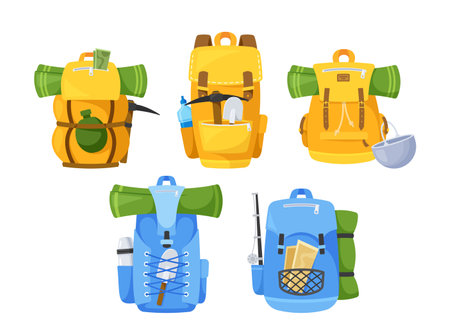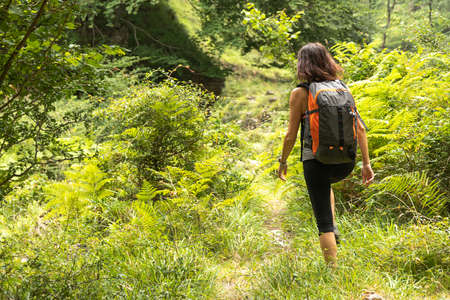Introduction to Backpacking in the Smokies
When it comes to backpacking adventures in the United States, the Great Smoky Mountains National Park stands out as a favorite among outdoor enthusiasts. Straddling the border of North Carolina and Tennessee, “the Smokies” are famous for their mist-covered peaks, lush forests, and miles of scenic trails. Whether you’re a seasoned hiker or just getting started with backpacking, this park offers something for everyone.
What Makes the Smokies Special?
The Great Smoky Mountains National Park is America’s most visited national park for good reason. Here’s why:
| Feature | Description |
|---|---|
| Rich Biodiversity | Over 19,000 documented species, including black bears, elk, salamanders, and hundreds of bird varieties. |
| Miles of Trails | More than 800 miles of maintained hiking trails winding through valleys, ridgelines, and old-growth forests. |
| Cultural History | Historic cabins, churches, and remnants of early Appalachian settlements dot the landscape. |
| Breathtaking Views | Panoramic vistas from spots like Clingmans Dome—the highest peak in Tennessee—offer unforgettable sunrise and sunset scenes. |
Unique Wildlife Encounters
If you love wildlife spotting, the Smokies won’t disappoint. The park is home to one of the largest protected bear populations in the eastern United States. You might also see white-tailed deer grazing at dawn or hear the call of an owl during a night hike. The area’s nickname as the “Salamander Capital of the World” hints at its incredible variety of amphibians as well.
Why Backpackers Love the Smokies
Backpackers flock to the Great Smoky Mountains for its diverse terrain and ever-changing scenery. From challenging climbs up rocky slopes to peaceful strolls through flower-filled meadows, every trail promises a new experience. With well-maintained shelters and campsites along many routes, it’s easy to plan everything from a quick overnight trip to a multi-day trek across the park.
2. Essential Gear and Permits
What to Pack for Backpacking in the Smokies
Heading out on a multi-day trek in Great Smoky Mountains National Park means being prepared for changing weather, rugged trails, and backcountry camping. Here’s a quick look at essential gear every backpacker should pack:
| Category | Must-Have Items |
|---|---|
| Backpack & Shelter | Internal frame backpack (50-65L), lightweight tent or hammock, sleeping bag (rated 20°F or lower), sleeping pad |
| Clothing | Moisture-wicking base layers, insulated jacket, rain gear, hiking socks, hat & gloves (even in summer) |
| Cooking & Water | Portable stove, fuel, lightweight cookware, utensils, water filter or purification tablets, hydration reservoir or bottles |
| Food & Snacks | High-calorie meals (dehydrated/freeze-dried), trail mix, energy bars, electrolyte mixes |
| Navigation & Safety | Map & compass or GPS device (cell service is unreliable), headlamp with extra batteries, first aid kit, bear spray/canister, multi-tool |
| Extras | Trekking poles, quick-dry towel, personal hygiene items, sunscreen & bug spray, extra ziplock bags/trash bags |
Choosing the Right Gear for Smoky Mountain Conditions
The Smokies are known for unpredictable weather—sunshine one minute and sudden storms the next. Prioritize waterproof gear and always pack layers so you can adapt to cooler temps at higher elevations. Because the park is home to black bears, carrying a bear canister or using park-provided bear cables is required at most campsites. Lightweight equipment will help you tackle long ascents and rocky paths without weighing you down.
Backcountry Permits: What You Need to Know
If you’re planning an overnight trip on any of the park’s backcountry trails—including popular routes like the Appalachian Trail or Alum Cave—you’ll need a backcountry permit. Permits are required for all overnight stays in the backcountry and must be reserved online before your trip. The process is simple:
- Create an account: Visit the Great Smoky Mountains National Park Backcountry Permit System website.
- Select your campsites/shelters: Use the interactive map to plan your route and select available sites.
- Pay the fee: There is a small fee per person per night.
- Print your permit: Bring a hard copy with you on your hike as rangers may check permits on the trail.
Pro Tips for Permits & Preparation
- Campsites and shelters fill up fast—especially during peak season—so book early!
- If your plans change due to weather or injury, contact the Backcountry Office to update your itinerary.
- No walk-in permits are available; always plan ahead.
- Bears are active year-round—follow all food storage regulations for your safety and theirs.
Packing Smart = Hiking Happy!
The right gear and proper permits make all the difference when backpacking in the Smokies. With a little planning, you’ll be ready for anything this wild mountain range throws your way.

3. Must-Do Trails for Backpackers
If you’re ready to lace up your boots and explore the Great Smoky Mountains National Park, there are a handful of trails that every backpacker should have on their bucket list. Whether you’re after sweeping vistas, deep forest solitude, or iconic Southern Appalachian experiences, these must-do routes deliver the best of the Smokies.
Classic Backpacking Routes
| Trail Name | Distance (Round Trip) | Highlights | Suggested Experience Level |
|---|---|---|---|
| Appalachian Trail (Smokies Section) | About 71 miles | Backcountry shelters, high ridges, panoramic views, wildflowers | Intermediate to Advanced |
| Alum Cave Trail to Mount LeConte | 11 miles | Dramatic bluffs, old-growth forest, summit lodge, sunrise views | Intermediate |
| Benton MacKaye Deep Woods Loop | Varies (15–25 miles options) | Remote campsites, waterfalls, less crowded, wildlife spotting | Intermediate to Advanced |
| Forney Creek & Lakeshore Loop | 18 miles | Cascading streams, lakeshore camping, rhododendron tunnels | Intermediate |
The Appalachian Trail: The Classic Smokies Trek
No list is complete without the legendary Appalachian Trail. The Smokies section stretches for about 71 miles along the park’s crest. It offers stunning ridge walks with long-range mountain views and plenty of opportunities to stay in rustic backcountry shelters. You’ll pass through spruce-fir forests and catch incredible sunrises if you camp near places like Clingmans Dome or Derrick Knob.
Why Backpackers Love It:
- Sweeping panoramas from Rocky Top and Charlies Bunion.
- The chance to meet thru-hikers during spring and fall.
- A true sense of accomplishment at the end of each day.
Alum Cave Trail to Mount LeConte: A Smokies Favorite
The Alum Cave Trail is a local favorite for reaching Mount LeConte—one of the highest peaks in the park. This trail packs a punch with cool geological features like Arch Rock and Alum Cave Bluffs before climbing steeply to LeConte Lodge. Spend a night at the shelter or the famous lodge (book early!), then wake up early to catch an unforgettable sunrise over the Smoky Mountain horizon.
Pro Tip:
- This trail gets busy on weekends—aim for midweek if you want more solitude.
Benton MacKaye & Deep Woods Loops: Off-the-Beaten-Path Adventure
If you’re searching for a quieter wilderness experience, try one of the deep woods loops combining sections of the Benton MacKaye Trail. These loops wind through remote valleys and ridges where you’re more likely to spot deer or even a black bear than run into another hiker. Campsites are more primitive but offer real peace and quiet under the stars.
Popular Loop Option:
- Lakeshore-Benton MacKaye-Forney Ridge loop (about 18–22 miles). Great for a two-night adventure!
4. Safety, Leave No Trace, and Wildlife Awareness
Staying Safe on the Trail
Backpacking the Smokies is an incredible adventure, but safety should always come first. The Great Smoky Mountains are famous for their stunning scenery—and also their unpredictable weather and thriving wildlife. Here’s what you need to know to stay safe and responsible while exploring these must-do trails.
Dealing with Black Bears
The Smokies are black bear country. While bear encounters are rare if you follow park guidelines, it’s important to be prepared:
| Tip | What To Do |
|---|---|
| Store Food Properly | Use bear-proof lockers or hang food at least 10 feet off the ground and 4 feet from tree trunks. |
| Make Noise | Talk, clap, or use bear bells to avoid surprising a bear. |
| If You See a Bear | Don’t run! Back away slowly and make yourself look large. Give the bear plenty of space. |
| No Feeding Bears | Never feed wildlife—this is dangerous for both you and the animals. |
Tackling Sudden Weather Changes
The weather in the Smokies can change fast, especially at higher elevations. Be ready for anything by following these tips:
- Check the forecast: Always look up current conditions before heading out.
- Packing layers: Bring rain gear, warm clothing, and extra socks. Hypothermia can happen even in summer!
- Shelter up: If thunderstorms roll in, avoid exposed ridges and seek shelter below treeline if possible.
- Navigation tools: Carry a map and compass—even when cell service is spotty.
Leave No Trace: Protecting the Park for Everyone
The Great Smoky Mountains are one of America’s most cherished wild spaces. Practicing Leave No Trace keeps them beautiful for future generations. Here are the seven principles every backpacker should follow:
- Plan Ahead & Prepare: Know your route and regulations.
- Travel & Camp on Durable Surfaces: Stick to established trails and campsites.
- Dispose of Waste Properly: Pack out all trash—including food scraps and hygiene items.
- Leave What You Find: Don’t pick plants or take home rocks or artifacts.
- Minimize Campfire Impact: Use a camp stove or existing fire rings only.
- Respect Wildlife: Observe from a distance; don’t approach or feed animals.
- Be Considerate of Others: Keep noise down and yield to other hikers on the trail.
Your Role as a Steward
Your actions make a big difference. By respecting wildlife, preparing for unpredictable weather, and practicing Leave No Trace ethics, you help keep the Smokies wild and wonderful for everyone who comes after you.
5. Local Tips and Post-Hike Eats
Where to Refuel After the Trail
After a long day backpacking in the Smokies, nothing beats a good meal and some local flavor. Luckily, both Gatlinburg, TN, and Cherokee, NC, are just outside the park and packed with great places to eat and relax.
Top Eats in Gatlinburg
| Restaurant | What to Try | Why Locals Love It |
|---|---|---|
| Crockett’s Breakfast Camp | Griddle Cakes & Country Ham | Hearty portions, classic mountain vibes |
| Smoky Mountain Brewery | Burgers & House-Brewed Beer | Casual spot for hikers, big menu |
| The Peddler Steakhouse | Custom-cut Steaks | Historic setting right by the river |
Tasty Spots in Cherokee
| Restaurant | What to Try | Why Locals Love It |
|---|---|---|
| Sassy Sunflowers Bakery & Café | Homemade Sandwiches & Wraps | Fresh, healthy options, cozy atmosphere |
| Paul’s Family Restaurant | Southern Fried Chicken & Pie | Classic diner comfort food, friendly staff |
| Brio Italian Grille (at Harrah’s) | Pasta & Flatbreads | A nice sit-down after days on the trail |
Pro Tips from Local Backpackers
- Pace Yourself: The Smokies can be humid and hilly—start early to beat the heat and crowds.
- Bears Are Real: Use bear-proof food containers and know how to store your pack at camp.
- Water Sources: Streams are usually plentiful but always treat water before drinking.
- Leave No Trace: Pack out all trash—even orange peels!
- Weather Changes Fast: Bring rain gear even if it looks sunny when you start out.
- Packing Light: Local outfitters in Gatlinburg offer gear rentals and last-minute supplies if you need to lighten your load or pick up essentials.
- Town Shuttles: Several local companies offer shuttle services between trailheads and nearby towns—great for point-to-point hikes.
Your Smokies Adventure Awaits!
The Great Smoky Mountains are packed with adventure—and great food nearby. Follow these local tips and check out some of these post-hike eats to make your trip unforgettable!


